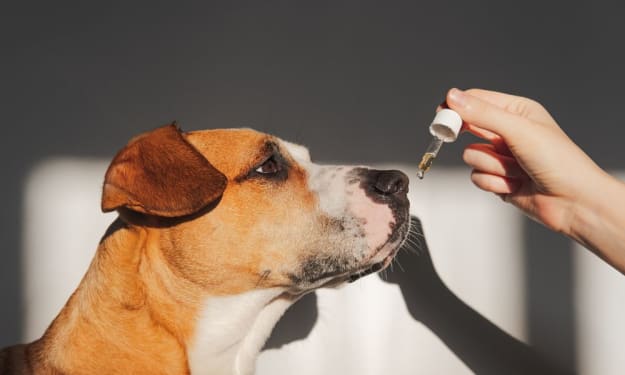
Protecting Frog Health and Wellbeing Through Responsible Handling Practices
Frogs make fascinating and rewarding pets, but their delicate nature requires special care when it comes to handling. As amphibians, frogs have permeable skin that can easily absorb harmful substances, making improper handling a serious health risk. However, with the right knowledge and techniques, you can safely interact with your pet frog while prioritizing its wellbeing.
In this comprehensive guide, we'll explore the dos and don'ts of frog handling, covering essential topics like disease transmission, stress reduction, and proper handling methods. Whether you're a seasoned frog owner or just starting out, this guide will equip you with the information needed to handle your pet frog safely and responsibly.
Understanding the Risks of Improper Handling
Frogs are unique creatures that require specialized care, and their handling is no exception. The primary concern with improper frog handling is the risk of disease transmission and skin irritation. Frogs have highly permeable skin that can easily absorb chemicals, oils, and bacteria from human hands.
One of the most common issues is the transfer of harmful bacteria and fungi from human skin to the frog. Frogs are susceptible to a variety of diseases, including Salmonella, Chytrid fungus, and Ranavirus, which can be transmitted through direct contact. These infections can have devastating consequences for the frog's health, potentially leading to illness, organ failure, and even death.
In addition to disease transmission, the oils and chemicals present on human skin can also disrupt the frog's delicate skin and respiratory functions. Frogs rely on their skin to absorb oxygen and water, and any disruption to this process can cause significant stress and harm.
Proper Frog Handling Techniques
To ensure the safety and wellbeing of your pet frog, it's essential to follow proper handling techniques. Here are the key steps to keep in mind:
- Wash Your Hands: Before handling your frog, thoroughly wash your hands with a mild, fragrance-free soap and rinse them thoroughly. Avoid using hand sanitizers or lotions, as these can contain chemicals that may be harmful to the frog.
- Wet Your Hands: Frogs have sensitive skin that can be easily damaged by dry hands. Before picking up your frog, wet your hands with dechlorinated water to create a moist, protective barrier.
- Support the Frog's Body: When handling a frog, always support its entire body, including the legs and abdomen. Avoid grabbing the frog by the legs or head, as this can cause injury.
- Minimize Handling Time: Limit the amount of time you handle your frog to the absolute minimum necessary. Prolonged handling can cause significant stress and increase the risk of disease transmission.
- Avoid Unnecessary Handling: Unless it's absolutely necessary, such as for tank cleaning or veterinary care, try to minimize handling your frog. Frogs are generally happier and healthier when left undisturbed in their enclosure.
- Use Gloves (Carefully): While gloves can provide an additional barrier between your hands and the frog, they may also contain chemicals or materials that can harm the frog's skin. If using gloves, ensure they are made of a safe, non-toxic material and thoroughly rinse them before handling the frog.
- Provide a Secure Environment: When handling your frog, do so over a soft, padded surface to prevent the frog from jumping and potentially injuring itself. Keep the frog close to its enclosure to minimize stress and the risk of escape.
By following these guidelines, you can safely interact with your pet frog while minimizing the risks to its health and wellbeing.
Recognizing and Reducing Frog Stress
Frogs are sensitive creatures that can easily become stressed, and stress can have a significant impact on their health and lifespan. Recognizing the signs of stress in your frog is crucial to ensuring its well-being.
Some common signs of stress in frogs include:
- Rapid breathing or panting
- Lethargy or lack of activity
- Refusal to eat
- Skin discoloration or changes in texture
- Hiding or burrowing behavior
To reduce stress during handling, follow these tips:
- Minimize handling as much as possible
- Avoid sudden movements or loud noises near the frog's enclosure
- Provide a calm, quiet environment for the frog to recover after handling
- Ensure the frog's enclosure is properly set up with appropriate temperature, humidity, and hiding spots
By being mindful of your frog's stress levels and taking steps to minimize stress, you can help ensure your pet's overall health and happiness.
Handling Wild Frogs: A Cautionary Tale
While the focus of this guide has been on handling pet frogs, it's important to note that the same principles apply to handling wild frogs as well. In fact, handling wild frogs can be even more problematic, as you may not know the frog's health status or the potential diseases it may be carrying.
Picking up wild frogs is generally discouraged, as it can cause significant stress and harm to the animal. If you encounter a wild frog in need of assistance, such as being in danger or in distress, it's best to contact a local wildlife rehabilitation center or conservation organization for guidance on the proper course of action.
Conclusion
Handling pet frogs requires a delicate touch and a deep understanding of their unique needs. By following the proper techniques and prioritizing the frog's health and wellbeing, you can safely interact with your pet while minimizing the risks of disease transmission and skin irritation.
Remember, frogs are sensitive creatures that deserve our utmost care and respect. By adhering to responsible handling practices, you can ensure a long, healthy, and rewarding relationship with your pet frog.
About the Creator
Hasan
Welcome...
In this site of mine you can learn amazing things and many information that you don't know so please subscribe to my site.
Enjoyed the story? Support the Creator.
Subscribe for free to receive all their stories in your feed. You could also pledge your support or give them a one-off tip, letting them know you appreciate their work.






Comments
There are no comments for this story
Be the first to respond and start the conversation.